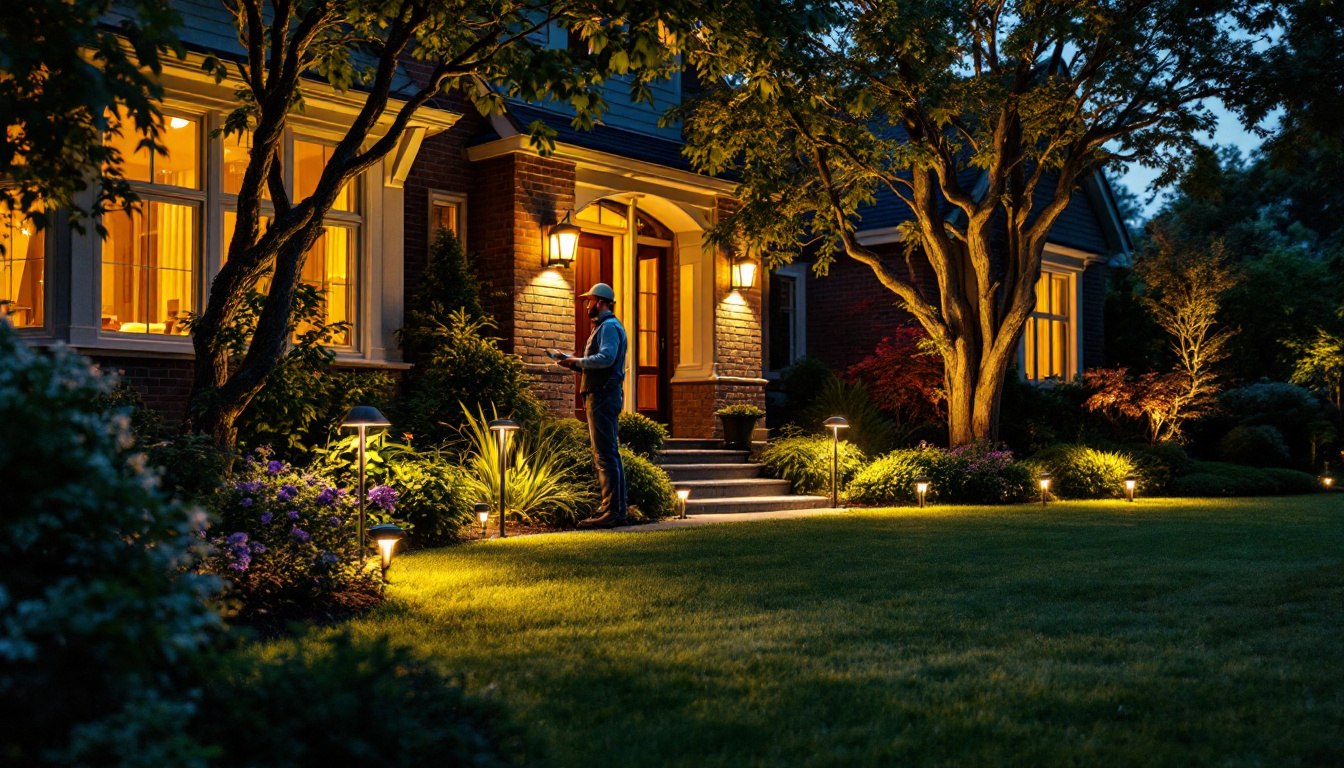
As the demand for innovative lighting solutions continues to rise, LED light strips have emerged as a versatile and popular choice for both residential and commercial spaces. Lighting contractors are increasingly incorporating these strips into their designs, recognizing their potential to transform environments with ease and efficiency. This article explores the latest trends in LED light strips, providing essential insights for lighting contractors looking to stay ahead in the industry.
LED light strips, also known as LED tape lights, are flexible circuit boards populated with light-emitting diodes (LEDs). They come in various lengths, colors, and brightness levels, making them suitable for a wide range of applications. Their flexibility allows them to be installed in tight spaces or around corners, providing unique lighting solutions that traditional fixtures may not accommodate.
These strips are typically adhesive-backed, which simplifies installation. Many models are also dimmable and can be controlled via remote or smart home systems, adding another layer of convenience for users. As a result, LED light strips are becoming a go-to option for creating ambient, task, and accent lighting.
One of the primary advantages of LED light strips is their energy efficiency. Compared to traditional incandescent or fluorescent lights, LEDs consume significantly less power while providing the same or even higher levels of brightness. This not only reduces energy costs but also contributes to a more sustainable environment.
Additionally, LED light strips have a longer lifespan, often lasting up to 50,000 hours or more. This durability means less frequent replacements, reducing maintenance costs and hassle for both contractors and clients. Furthermore, the low heat output of LEDs minimizes the risk of overheating, making them a safer option for various applications.
With the rise of smart home technology, the integration of LED light strips into smart lighting systems has become increasingly popular. Many modern LED strips can be connected to Wi-Fi or Bluetooth, allowing users to control their lighting through smartphones or voice-activated devices. This trend provides homeowners with greater control over their lighting environments, enabling them to adjust brightness, color, and even set schedules for their lights.
For lighting contractors, understanding how to integrate these smart systems is essential. Offering clients the option to control their lighting remotely not only enhances their experience but also positions contractors as knowledgeable professionals in a rapidly evolving market.
Another significant trend is the customization of color temperature in LED light strips. While warm white and cool white options have been available for some time, the ability to adjust the color temperature dynamically is gaining traction. This feature allows users to create different atmospheres within a space, from cozy and inviting to bright and energizing.
Lighting contractors should be aware of the various color temperature options available and how they can be utilized to enhance the aesthetic appeal of a room. For example, using warmer tones in living spaces can promote relaxation, while cooler tones in workspaces can boost productivity.
The use of RGB (Red, Green, Blue) and RGBW (Red, Green, Blue, White) LED light strips is another trend that has gained popularity. These strips allow users to create a wide spectrum of colors, enabling dynamic lighting effects that can change the mood of a room instantly. Whether for entertainment spaces, retail environments, or even residential applications, the ability to customize colors adds a unique touch to any project.
Contractors should consider how to incorporate RGB and RGBW strips into their designs, as they can be used for everything from accent lighting to full room illumination. Understanding the technical aspects of these products, including control systems and compatibility, is crucial for successful implementation.
In residential settings, LED light strips are being used in innovative ways to enhance the overall aesthetic and functionality of homes. From under-cabinet lighting in kitchens to backlighting for televisions and artwork, these strips offer a seamless way to add illumination without compromising design.
Moreover, they can be employed in bedrooms to create ambient lighting that promotes relaxation. By installing LED strips along the edges of ceilings or behind headboards, homeowners can achieve a soft glow that enhances the room’s atmosphere. For contractors, understanding these residential applications can lead to more tailored and appealing design solutions.
In commercial environments, LED light strips are being utilized to create engaging and dynamic spaces. Retailers are using them to highlight products, create visual interest, and guide customers through their stores. Restaurants are incorporating LED strips into their decor to set the mood and enhance the dining experience.
Lighting contractors should be aware of the specific needs of commercial clients, as these projects often require a different approach than residential installations. Understanding how to balance aesthetics with functionality is key to delivering successful commercial lighting solutions.
Architectural lighting is another area where LED light strips are making a significant impact. These strips can be used to accentuate structural elements, highlight textures, and create dramatic effects in both interior and exterior applications. From illuminating staircases to outlining building facades, the versatility of LED strips allows for creative expression in architectural design.
For contractors, staying informed about the latest architectural trends and techniques is essential. Collaborating with architects and designers to understand their vision can lead to innovative lighting solutions that enhance the overall design of a space.
Before installation, careful planning of the layout is crucial. Lighting contractors should consider the purpose of the lighting, the desired effects, and the specific areas where the strips will be installed. Creating a detailed plan can help ensure that the final result meets the client’s expectations and enhances the overall design.
Additionally, contractors should take into account the power supply requirements and ensure that the strips are compatible with existing electrical systems. Proper planning can prevent common installation issues and lead to a smoother process.
The adhesive backing on LED light strips is designed for easy installation, but it is essential to choose the right surface for adhesion. Contractors should ensure that the surface is clean, dry, and free of dust or grease to achieve optimal adhesion. In some cases, additional adhesive may be required for surfaces that are not conducive to the strip’s adhesive backing.
Understanding the specific requirements of different surfaces can help contractors avoid issues with strips peeling away over time, ensuring a long-lasting installation.
For installations that incorporate smart technology, understanding the various control systems available is essential. Lighting contractors should familiarize themselves with different types of controllers, including remote controls, wall-mounted switches, and smartphone apps. This knowledge allows contractors to provide clients with a seamless user experience and ensures that the lighting system is easy to operate.
Additionally, educating clients on how to use these control systems can enhance their overall satisfaction with the installation. Offering demonstrations and providing clear instructions can help clients feel more confident in managing their new lighting systems.
As the focus on well-being and health in interior design grows, human-centric lighting is becoming a significant trend. This approach involves adjusting lighting to align with the natural circadian rhythms of individuals, promoting better sleep, productivity, and overall well-being. LED light strips can play a vital role in this trend by offering customizable color temperatures and brightness levels that can be adjusted throughout the day.
Lighting contractors should stay informed about advancements in human-centric lighting technology and how to implement these solutions effectively. Understanding the science behind circadian rhythms and how lighting impacts them can provide valuable insights for creating healthier environments.
Future innovations may also include advanced color control technologies that allow for even more sophisticated lighting effects. These technologies could enable users to create dynamic lighting scenes that change based on time of day, mood, or activity. As these technologies develop, lighting contractors will need to adapt their skills and knowledge to incorporate them into their designs.
Staying ahead of the curve in terms of technology will position contractors as leaders in the field, attracting clients who are looking for cutting-edge solutions.
With a growing emphasis on sustainability, the future of LED light strips may also involve innovations in eco-friendly materials and manufacturing processes. Lighting contractors should be prepared to embrace these changes and consider how to incorporate sustainable practices into their work. This may include sourcing products from manufacturers that prioritize sustainability or implementing energy-efficient designs that reduce overall consumption.
By adopting sustainable practices, contractors can not only meet client expectations but also contribute to a more environmentally responsible industry.
LED light strips are revolutionizing the way lighting is approached in both residential and commercial spaces. As trends continue to evolve, lighting contractors must stay informed about the latest developments to provide clients with innovative and effective solutions. From smart technology integration to human-centric lighting, understanding these trends will enhance the contractor’s ability to deliver exceptional results.
By embracing the versatility and potential of LED light strips, contractors can position themselves as leaders in the lighting industry, ready to meet the demands of a changing market. As the landscape of lighting continues to shift, staying ahead of trends will be key to success in this dynamic field.
Ready to lead the charge in the ever-evolving world of lighting with the latest LED strip trends? At LumenWholesale, we’re committed to equipping you with the highest quality, spec-grade lighting products at prices that respect your bottom line. Say goodbye to unnecessary markups and hello to a vast selection of reliable lighting solutions that meet rigorous industry standards. Plus, with free shipping on bulk orders, you can stock up on premium lighting without any hidden costs. Elevate your lighting game and give your clients the innovative, cost-effective installations they deserve. Discover the perfect fusion of quality, value, and convenience. Wholesale Lighting at the Best Value awaits you at LumenWholesale.

Discover the science behind 2X4 LED light panels and their impact on modern lighting solutions.

Discover why loading dock lights are often overlooked yet crucial components in lighting projects.

Discover the pitfalls to avoid when installing solar lights in your yard.

Explore the science of light efficient design and discover how it revolutionizes the work of lighting contractors.